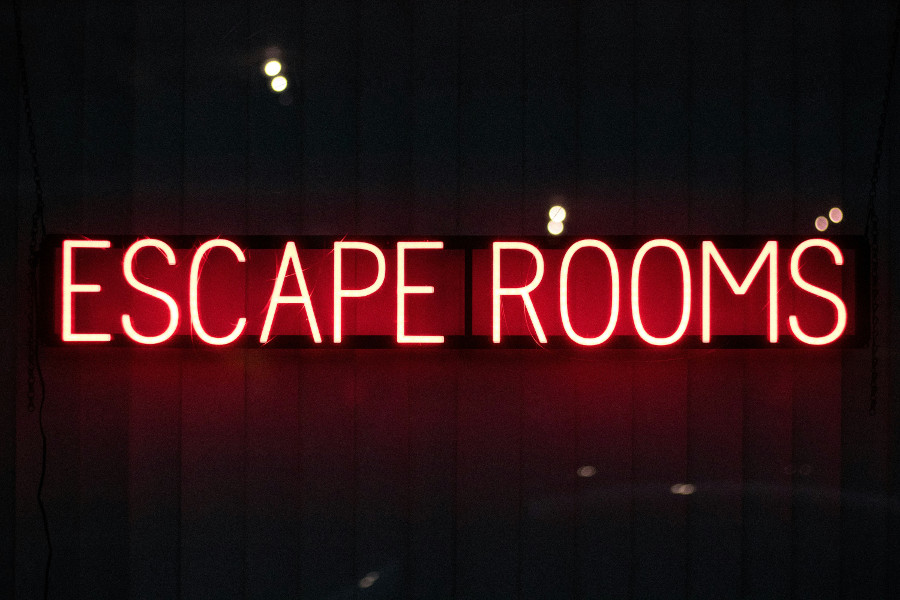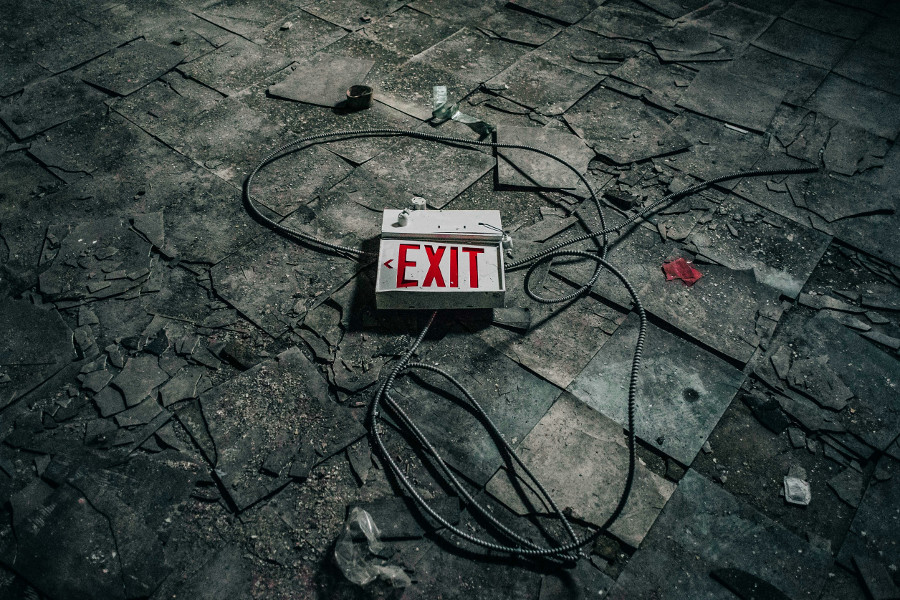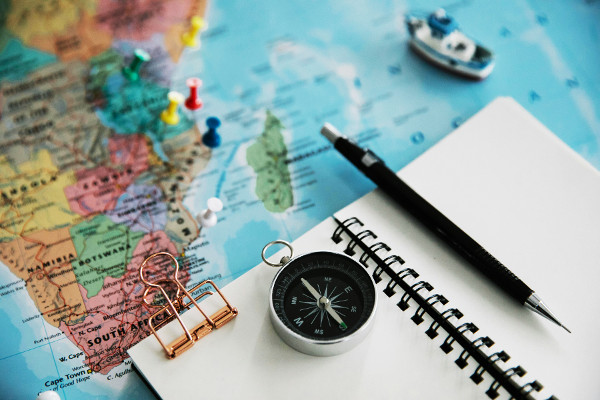How to Master Escape Rooms: Tips, Puzzles, and Everything You Need to Know
Escape rooms offer an exciting blend of adventure, problem-solving, and teamwork, but if you’re new to the game, they can be a little intimidating. Whether you're wondering how they work, what to bring, or how much they cost, this guide covers it all. We’ll dive into the most common questions and answers to help you feel ready to take on the challenge and escape with ease. So, gear up - your adventure starts here!

What are escape rooms?
Escape rooms are immersive, interactive experiences that invite you to step into a different world. Imagine being locked in a room, but not in a bad way - it's all part of the game. In this world, you’re on a mission, trying to solve a mystery, unlock hidden clues, and beat the clock before time runs out. The puzzles, riddles, and clues are scattered throughout the room, each leading you one step closer to freedom. You work with your team, using your collective skills and wits to unravel the story. Escape rooms are the ultimate test of your problem-solving abilities and teamwork - and the best part? It’s all just for fun.
How do escape rooms work?
Think of an escape room as a puzzle within a puzzle, within a story. When you enter the room, you’re given a mission. It could be solving a crime, escaping a haunted mansion, or finding treasure. From there, your team is set loose to find hidden clues, unlock boxes, decipher codes, and solve puzzles. As you work through these challenges, you move closer to "escaping" - or solving the mystery. It’s all about working together, communicating, and using your brains (and sometimes brawn) to piece everything together. The clock is ticking, the tension builds, and every second counts. It’s a race against time.
What is the goal of an escape room?
The ultimate goal of an escape room is simple: solve all the puzzles, uncover all the clues, and escape before time runs out. However, the path to success is anything but simple. Each room is built with a series of challenges and riddles that require you to think creatively, work together, and stay calm under pressure. The mission might vary - maybe you're cracking a code, or maybe you're uncovering a mystery. But no matter what the scenario is, the end goal remains the same: complete the challenge before the timer hits zero. It’s a race against both the clock and your own wits.
How long does an escape room usually take?
Escape rooms are typically designed to be completed in about an hour. 60 minutes is the standard time limit, and it's carefully designed to keep you on your toes without feeling rushed. The clock is your enemy, counting down as you scramble to piece together clues and solve puzzles. Of course, every second feels like an eternity when you're locked in the middle of a thrilling mystery. Some rooms might offer a bit of extra time if you’re close to escaping, while others stick to the strict 60-minute rule. Either way, it’s enough time to challenge your problem-solving skills and leave you on the edge of your seat.

What kind of puzzles are in escape rooms?
Escape rooms are all about variety - and that includes the puzzles. You might encounter logic problems, riddles, word games, hidden objects, or even physical challenges. Some puzzles require you to think critically, while others ask you to pay close attention to details in the room. You might be decoding symbols, figuring out how to unlock a hidden compartment, or assembling pieces of a larger puzzle. Each room offers a unique set of challenges, all designed to push your brain to its limits. And don’t forget, the room might also surprise you with tech-based puzzles or hidden mechanisms that bring a touch of magic to the experience.
How many people can play in an escape room and can you do it if you're not in a group?
Escape rooms usually work best with a group, though it’s possible to play solo or with just a few people. Most rooms are designed for 2-8 players, depending on the size and difficulty level. You’ll need a good team to tackle the puzzles, brainstorm ideas, and divide up the tasks. But what if you’re flying solo? Many escape room venues allow you to join others, or you can book a private room just for yourself and a few friends. Some places even offer virtual escape room experiences, so you can join from anywhere - no group needed. It’s all about finding the right match for your adventure.
Are escape rooms scary?
It depends on the room! Some escape rooms are designed to be spine-chilling, with dark, eerie settings, creepy sounds, and even actors jumping out to add to the scare factor. If you’re into that kind of adrenaline rush, you’ll love the horror-themed rooms. But if horror isn’t your thing, don’t worry. There are plenty of escape rooms that focus on puzzles and mysteries, without any spooky elements. The good news is that you can usually check the room’s description ahead of time to see if it’s going to be a nail-biter or a more relaxed, adventurous experience. Escape rooms can be as scary (or not) as you want them to be.
What should I bring to an escape room?
For an escape room adventure, the most important thing to bring is your brain - ready to solve puzzles, think critically, and collaborate with your team. Aside from that, you don’t need much. Wear comfortable clothing and shoes because you might need to move around or get down on the floor to search for clues. Avoid bringing large bags, as they can get in the way or slow you down. Most rooms will have lockers or storage for your things. And if you wear glasses or contact lenses, don’t forget those - you’ll need sharp vision to spot hidden details in the room. Bring your curiosity, and you’ll be all set.

Are escape rooms safe?
Yes, escape rooms are generally very safe, but like any activity, safety is always a priority. Each room is designed with safety features in mind, such as emergency exits, panic buttons, and staff who monitor the experience from behind the scenes. You’re never truly “locked” in - it’s all part of the game. Escape rooms typically encourage you to move around, but with rules to ensure no one gets hurt. It’s also a good idea to let the staff know if you have any health concerns, such as claustrophobia, before starting. The experience is all about fun and problem-solving, not about putting you in a dangerous situation.
Can you leave an escape room if you get stuck?
Yes, you can leave the escape room if you need to, but there’s no shame in getting stuck! Escape rooms are meant to challenge you, and it’s okay if you need a break or want to exit early. Most venues have emergency exits or a “help” button that you can use if you’re feeling overwhelmed or stuck. And don’t worry - if you need help, staff members are usually happy to offer hints or guidance. While leaving early means you might not “escape” in time, you’ll still get a chance to hear how the mystery unfolds and enjoy the experience from a different perspective.
How much do escape rooms cost?
Escape rooms typically cost between $20 to $40 per person, depending on the location, the room’s complexity, and the number of players. The price usually includes the full experience: a brief introduction, access to the room, and any hints or guidance along the way. Some rooms may be more expensive if they involve elaborate sets or live actors to enhance the experience. Larger groups may also get discounts, and some places offer off-peak pricing. If you’re looking for something a little different, virtual escape rooms can also be a more affordable option. But either way, the cost is well worth the thrill.
What happens if you don't escape in time?
If you don’t manage to escape in time, don’t worry - the game is still a win in its own right. When the timer runs out, the staff will usually step in to reveal the solution, explaining how the puzzles fit together and how the mystery would have ended. While it’s a bummer to not escape before the clock runs out, it’s all part of the fun. Some escape rooms may even allow you to try again, or at least enjoy the experience from a different perspective. The goal is the adventure - escaping is just the icing on the cake.
Conclusion
Now that you’re armed with all the essential knowledge about escape rooms, it’s time to put it into action. Whether you're planning your first experience or looking to sharpen your skills, these tips will help you succeed and make the most out of your adventure. Remember, it’s not just about escaping - it’s about enjoying the thrill of the challenge and the teamwork along the way. Good luck, and have fun!



